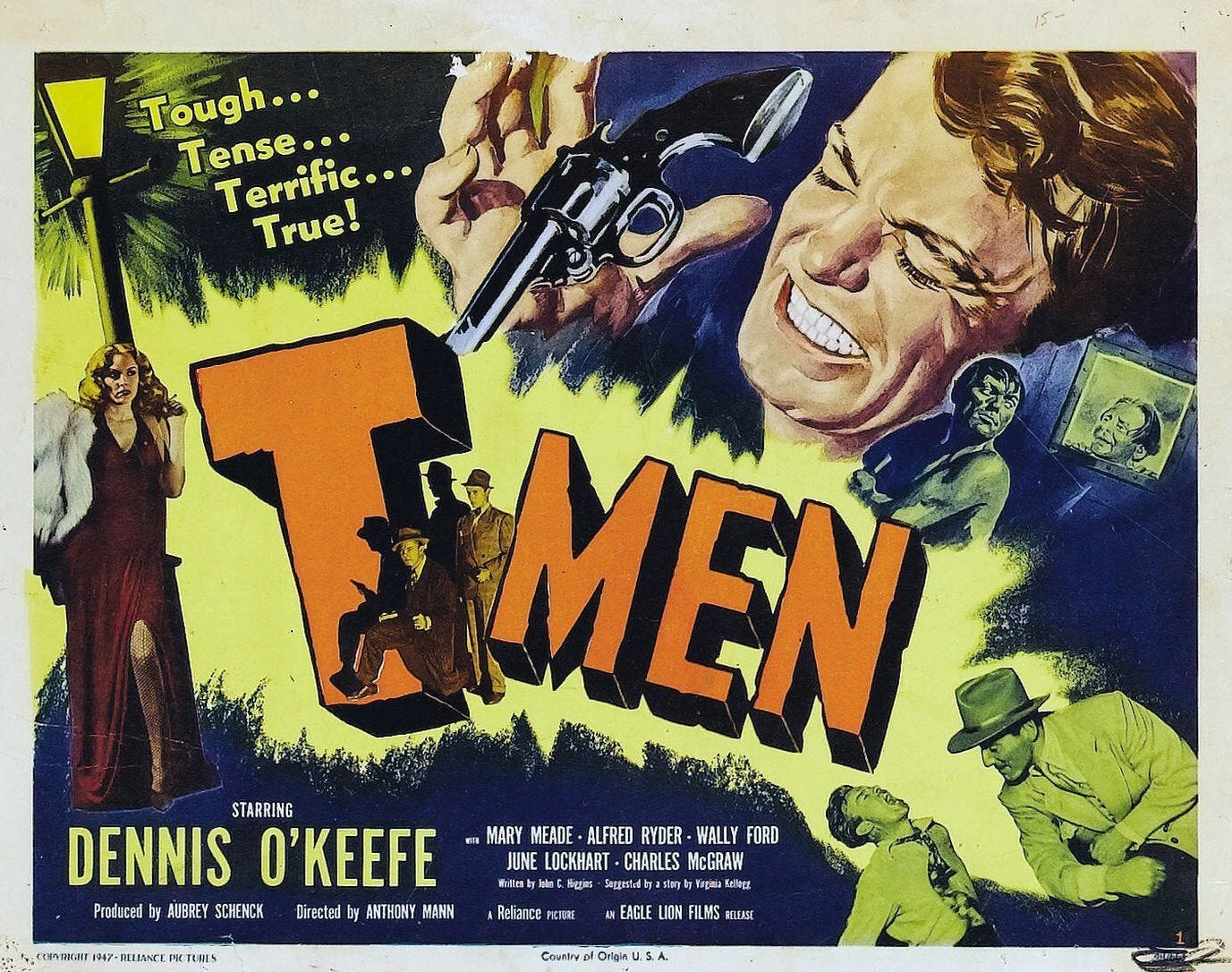Between Darkness and the Dawn
'T-Men' marked the first collaboration between Anthony Mann and John Alton.
Released by British distributor Eagle-Lion Films in December 1947, T-Men marked the first collaboration between director Anthony Mann and cinematographer John Alton.
Born in San Diego, California, Mann moved to New Jersey when he was 14 and, a few years later, began his career as an actor on the New York stage. By 1933, he had begun directing stage productions, even as he later also began working as a talent scout, casting director, and screen test director for Selznick International Pictures. He became an assistant director to people like Preston Sturges (Sullivan's Travels) in the early 1940s, making his feature film directing debut in 1942. Mann made Strangers in the Night, his first noir, in 1944, his second and third, The Great Flamarion and Two O'Clock Courage, in 1945, and his third, Strange Impersonation, in 1946. During this period, he also made a mystery, two comedies, two musicals, and a war film.
Born in Hungary, Alton moved to the U.S. to attend college and became a lab technician in Los Angeles in the 1920s. After moving to France for a year and then to Argentina for seven years, where he photographed a number of pictures, he returned to California and began working as a cinematographer in 1940. He shot nearly three dozen titles over the next seven years, culminating in his first teaming with Anthony Mann.
Presented in semi-documentary style, perhaps inspired by House of 92nd Street (1945), which featured FBI director J. Edgar Hoover in its opening montage, T-Men featured Elmer Lincoln Irey in its opening montage. The retired coordinator of the Treasury Department's law enforcement agencies introduces the film's story as a composite, meant to illustrate how the agencies worked together. In the screenplay written by John C. Higgins, the oft-present voice-over narrator (Reed Hadley) does the lion's share of explaining how the case is investigated and fills in story details. The visuals do the rest.
I've seen the film several times, and what struck me especially during my most recent viewing is how the narrative current, propulsive as it is, is deepened by the visual style. Law-enforcement officers and criminals emerge from and disappear into the shadows, which dominate each and every scene, no matter if the setting is outside or inside, nighttime or daytime. In less-forgiving lighting, the film's low budget might be more obvious, yet here it works to its advantage; by thoughtful framing and judicious camera movement, our eye is always drawn to what is most essential about the scene.
In Alain Silver and Elizabeth Ward's invaluable book Film Noir, the point is made that advances in technical equipment made it more possible for low-budget productions to shoot on location. Largely shot on location in Los Angeles, T-Men has always resonated with me because of the landmarks that I could still recognize decades later, Union Station especially, but also City Hall.
Yet so much has changed, and the film intentionally does not dwell on any familiar landmarks, the better to reinforce a spirit of lonely alienation. After all, the two lead 'T-Men' (Dennis O'Cooke and Alfred Ryder) are strangers to Los Angeles -- one is from St. Louis, the other from Indianapolis -- and so they are not familiar with nor especially interested in viewing the city as residents or tourists. Instead, after a brief meeting with their superiors, they arrive first in Detroit to begin their undercover assignment, and then travel to Los Angeles; they have been chosen, in part, because neither is from nor known in those two cities.
As events play out, the specific location is inconsequential, though I was surprised at the evident reality that, in 1947, Los Angeles supported a number of steam-bath houses! Instead, the walls close in and the two undercover Treasury Department agents become wrapped up in their assumed personas as hardened criminals. Their world has become claustrophobic as they are swallowed up by the shadows that constantly surround them, trapped between darkness and the light.
Director of photography John Alton shot two additional mystery thrillers for Eagle-Lion Films that are included in the John Alton Film Noir Collection, which I bought on Blu-ray a couple weeks ago. No extras are included, but T-Men looks very good to my eyes. And the film itself has already rewarded multiple viewings.
The film is now available on Blu-ray and DVD, via Classic Flix.


